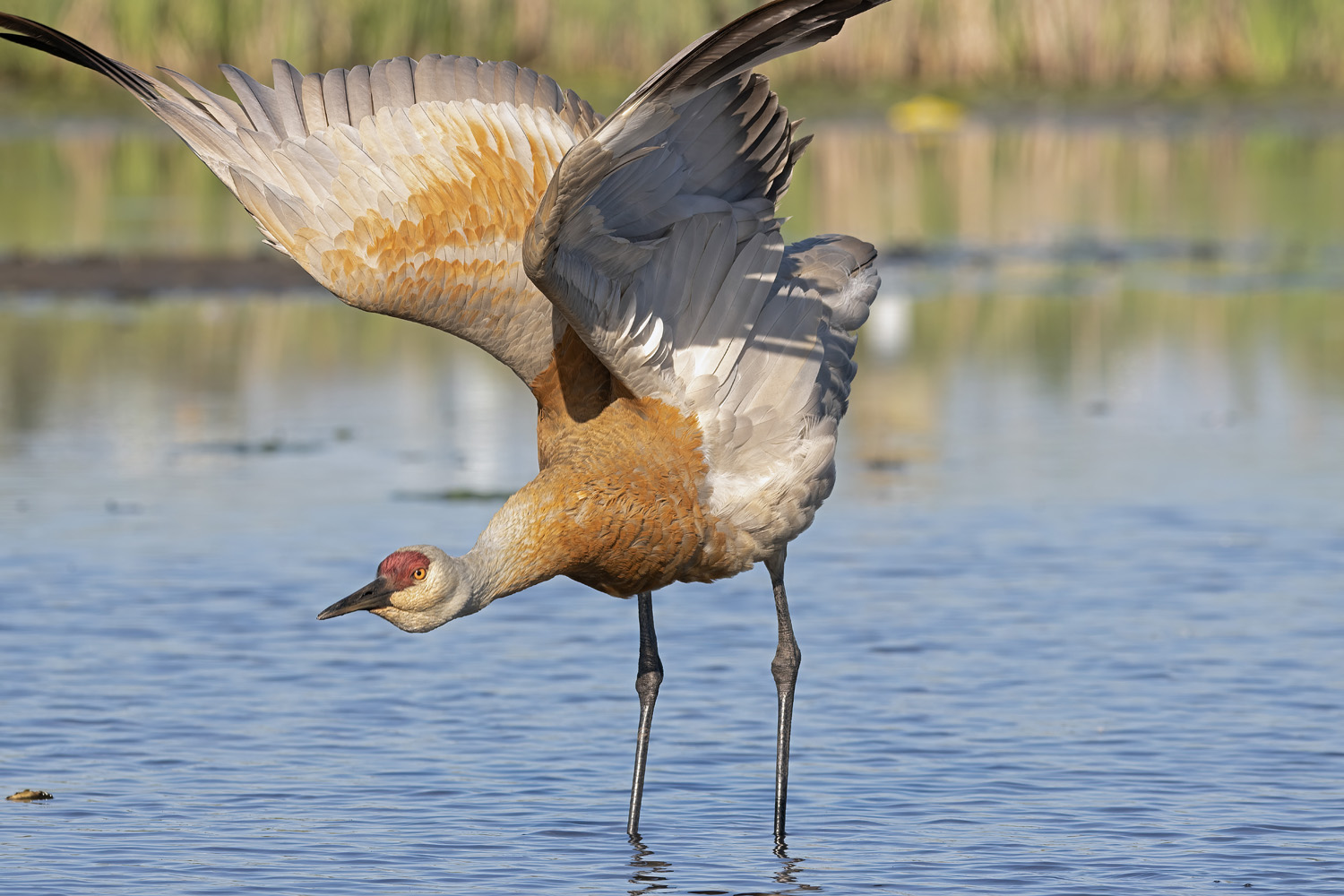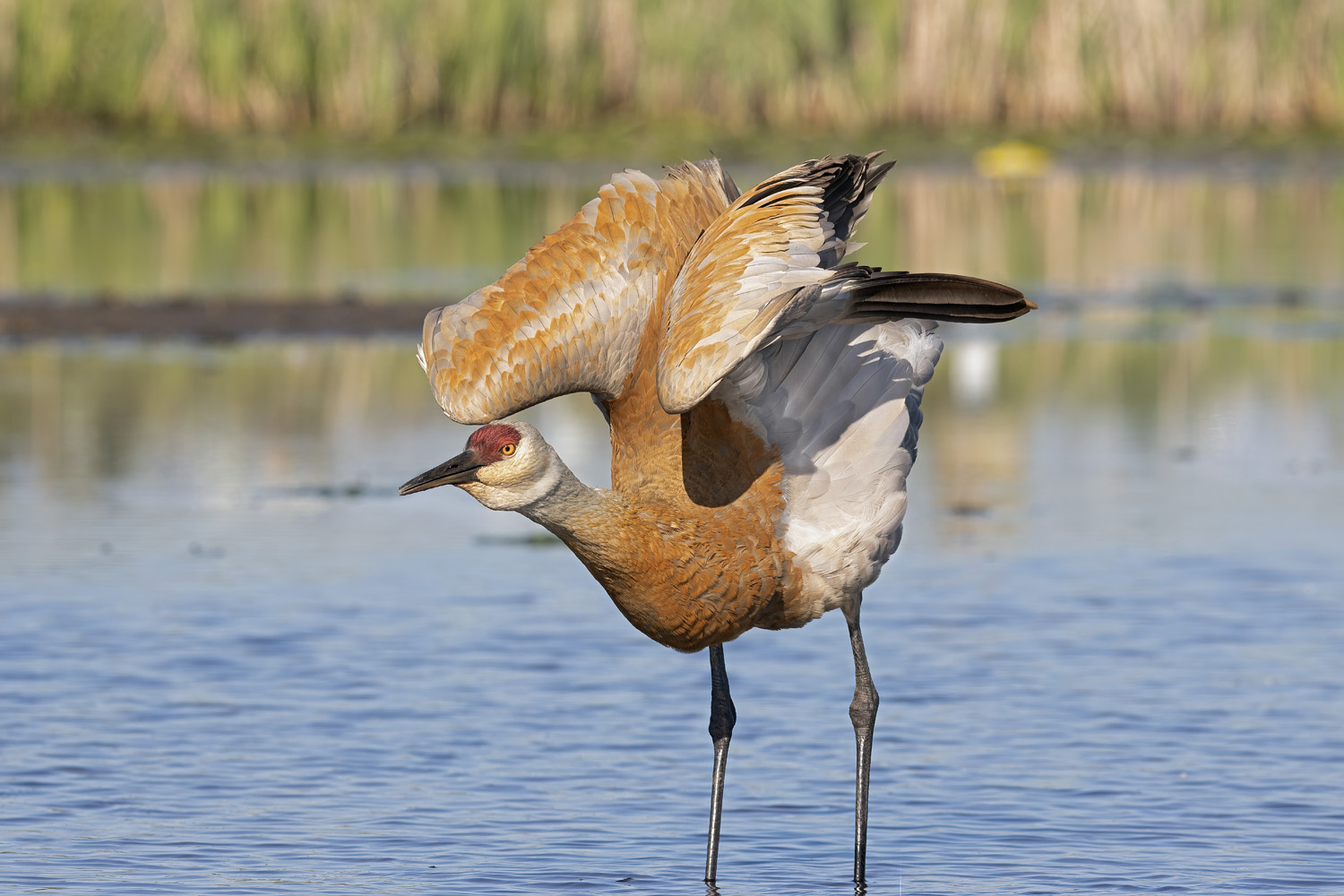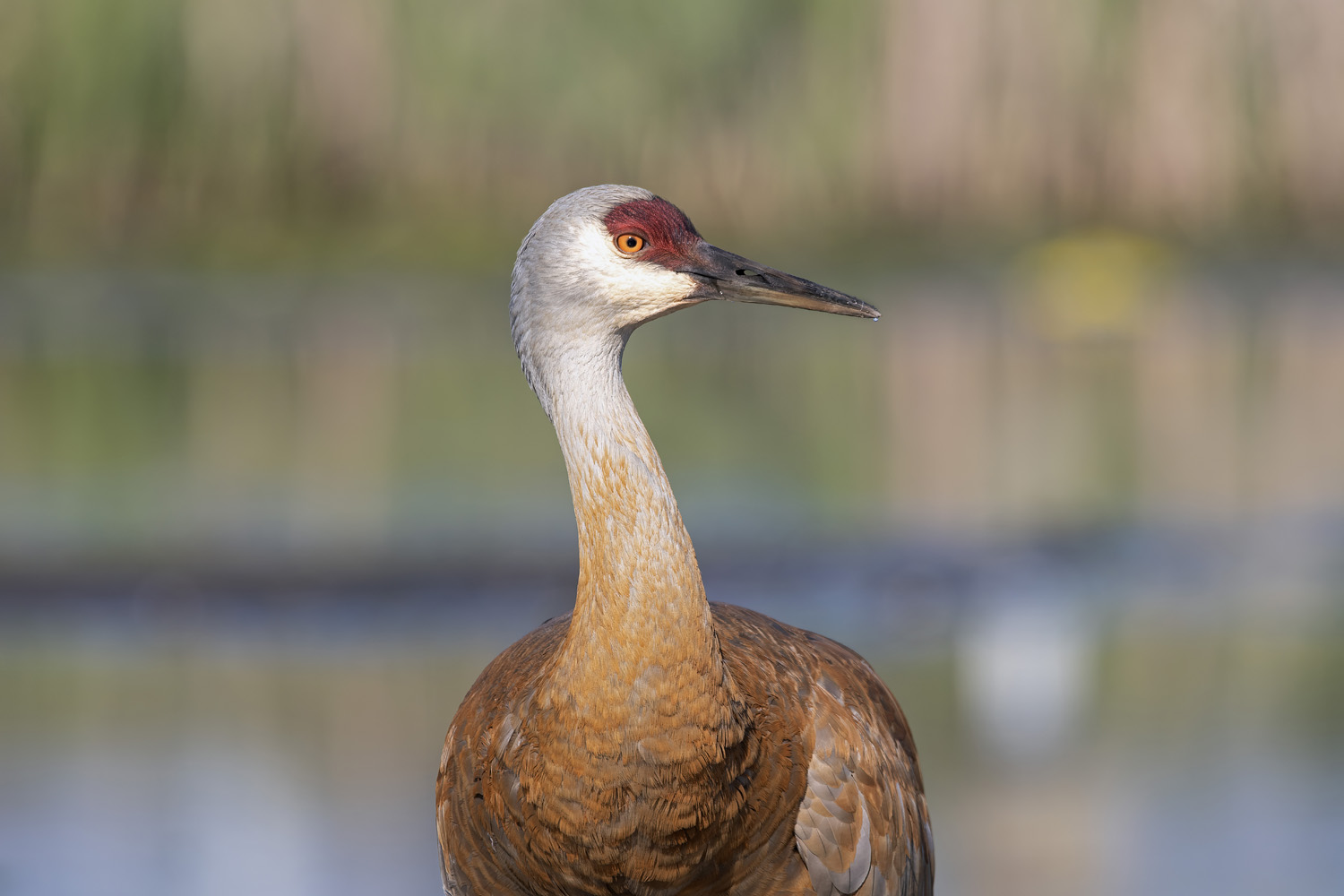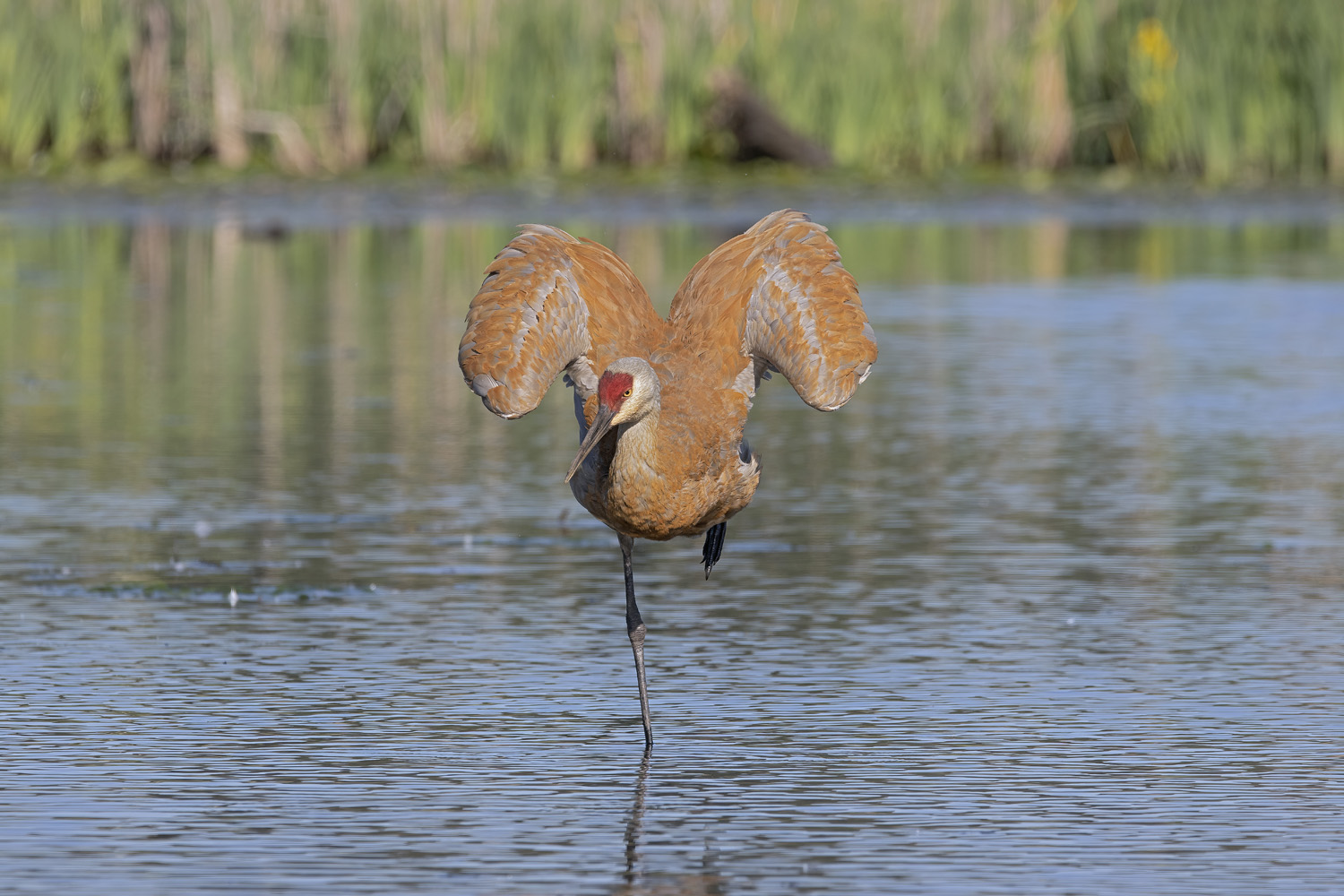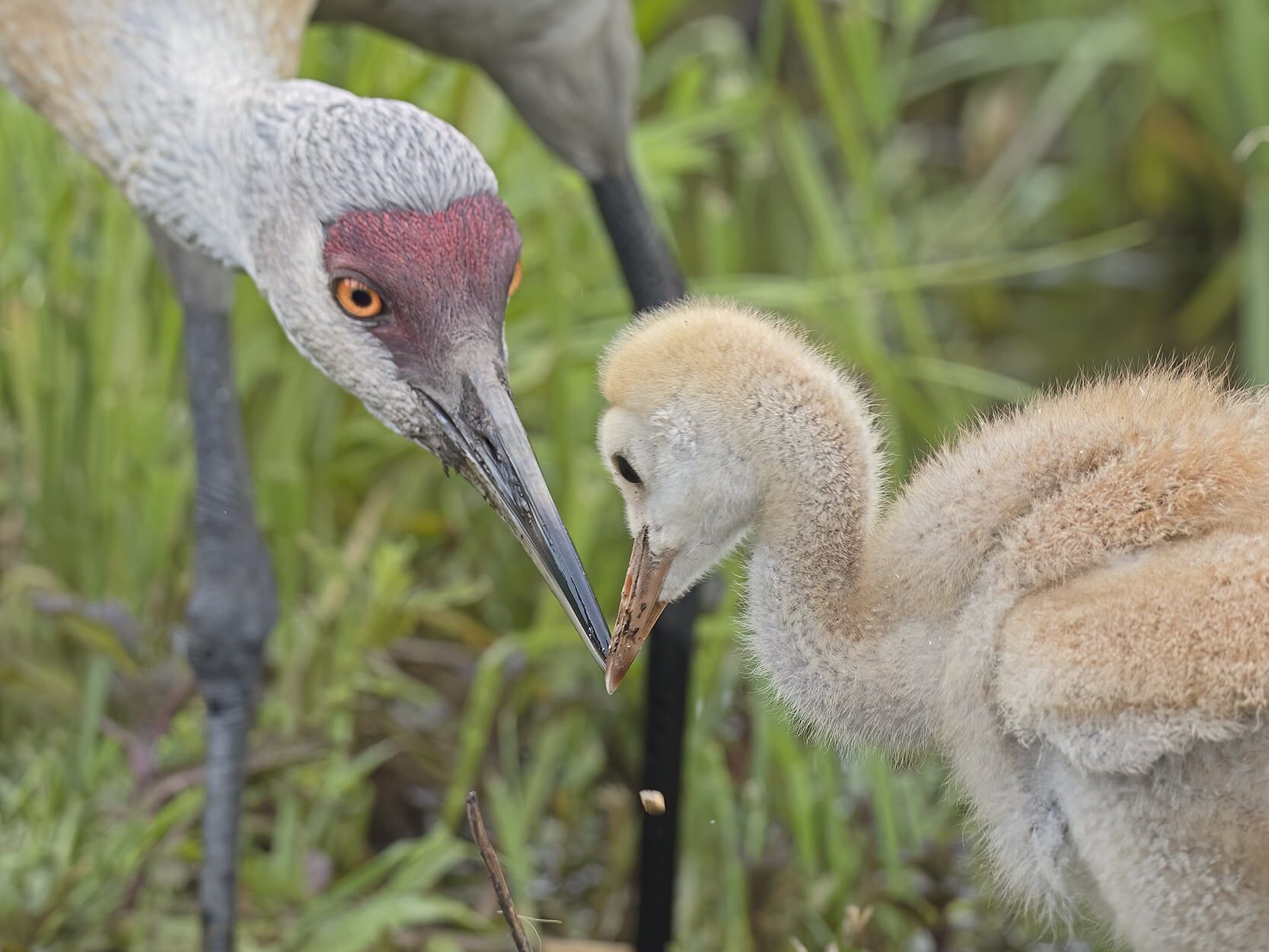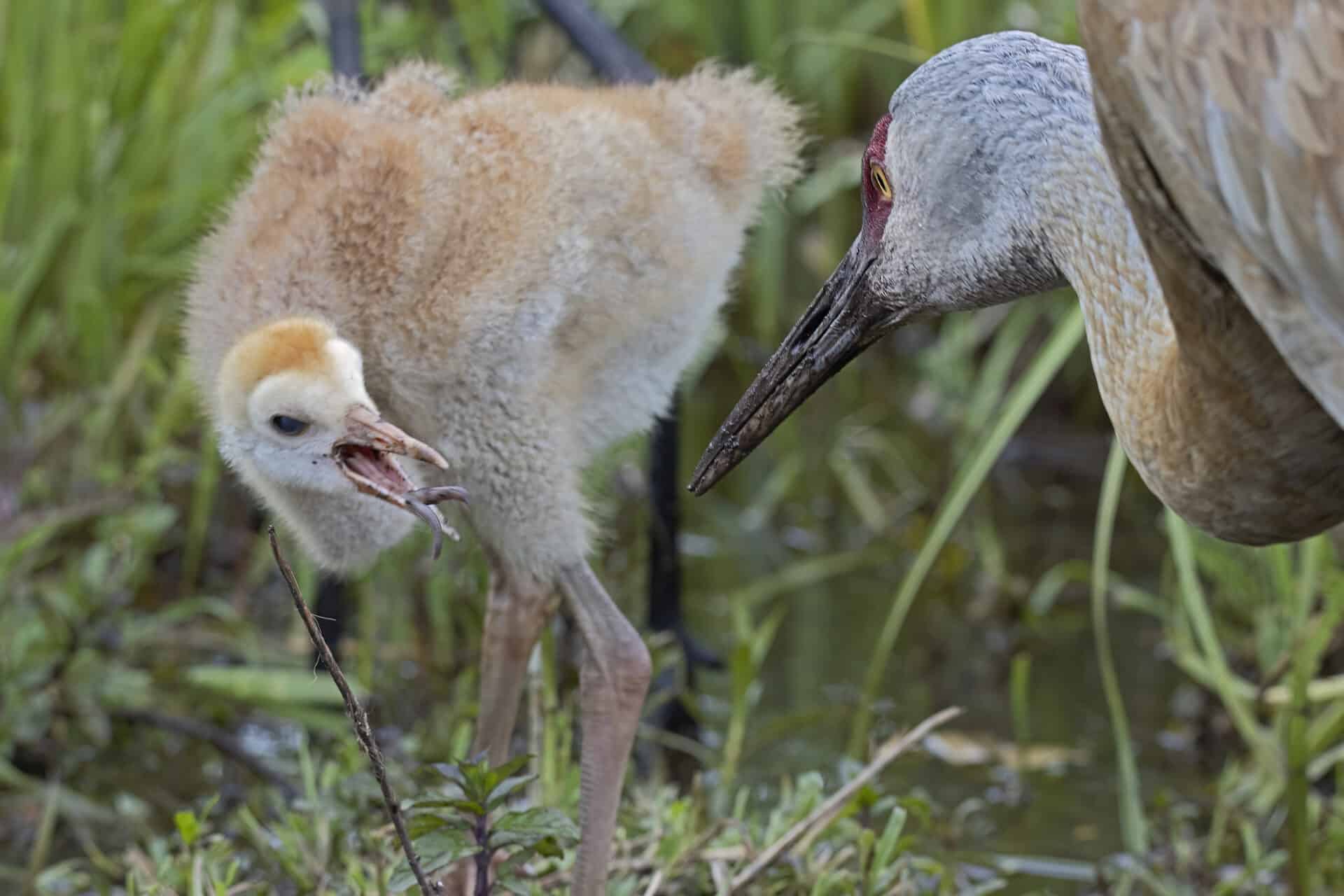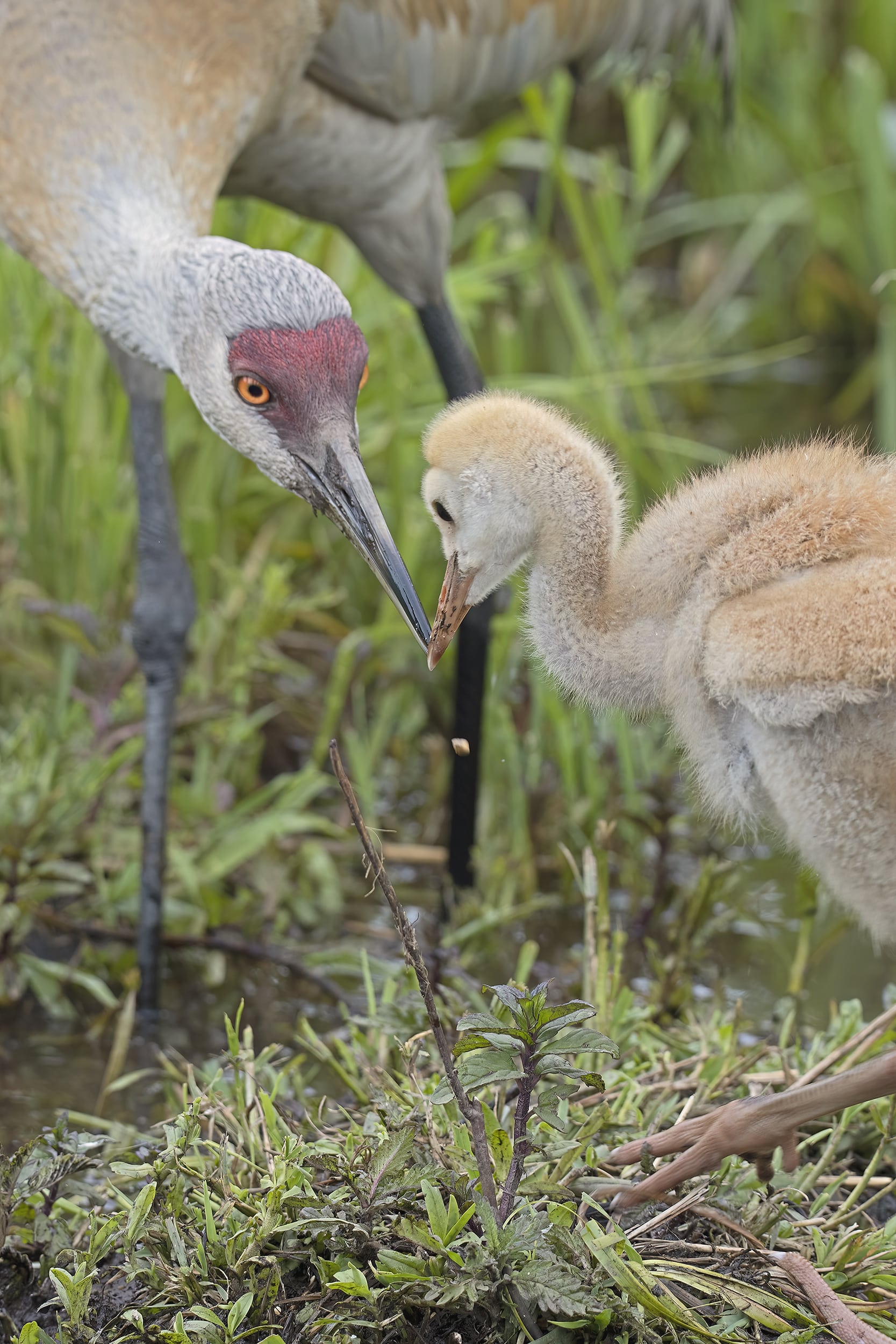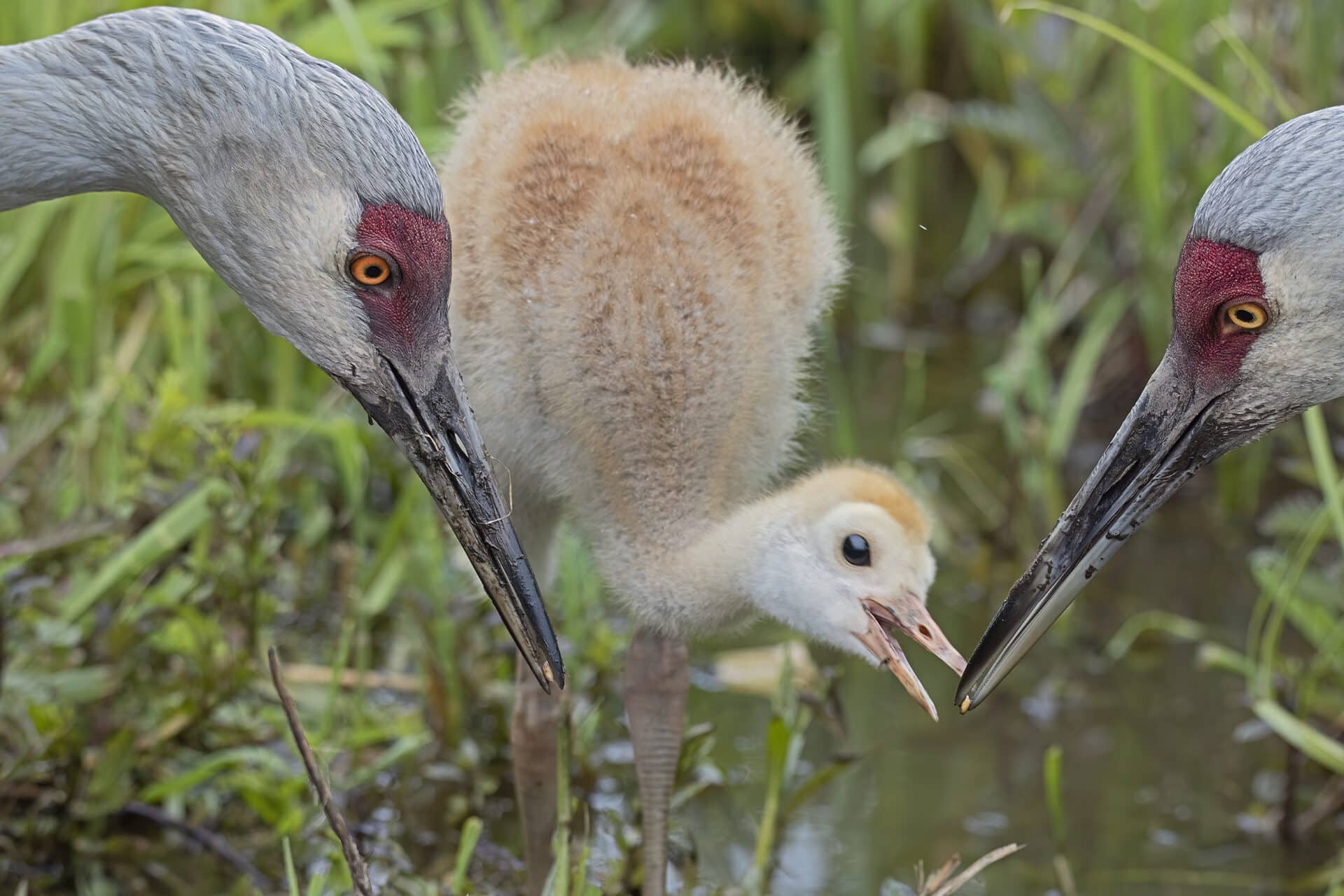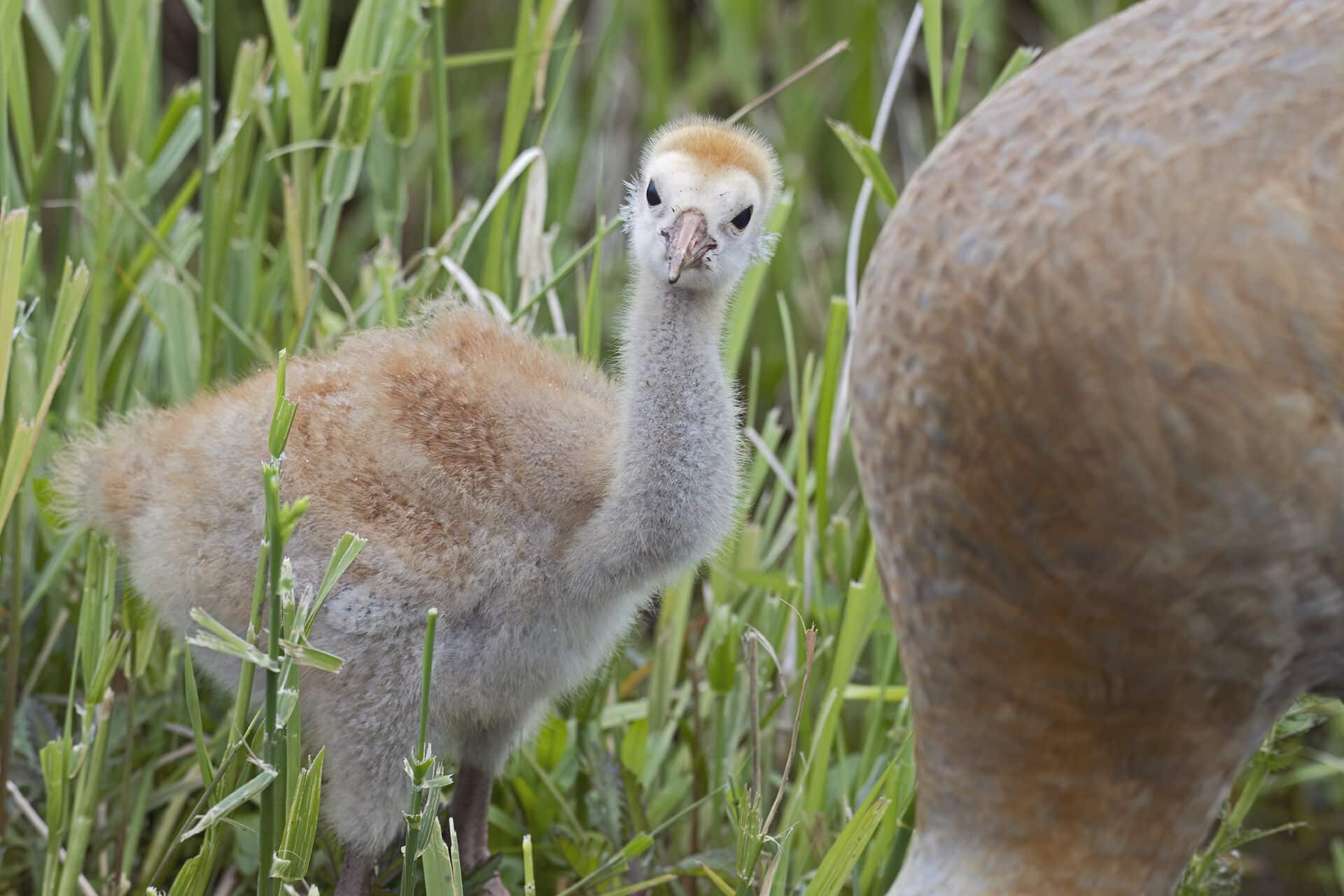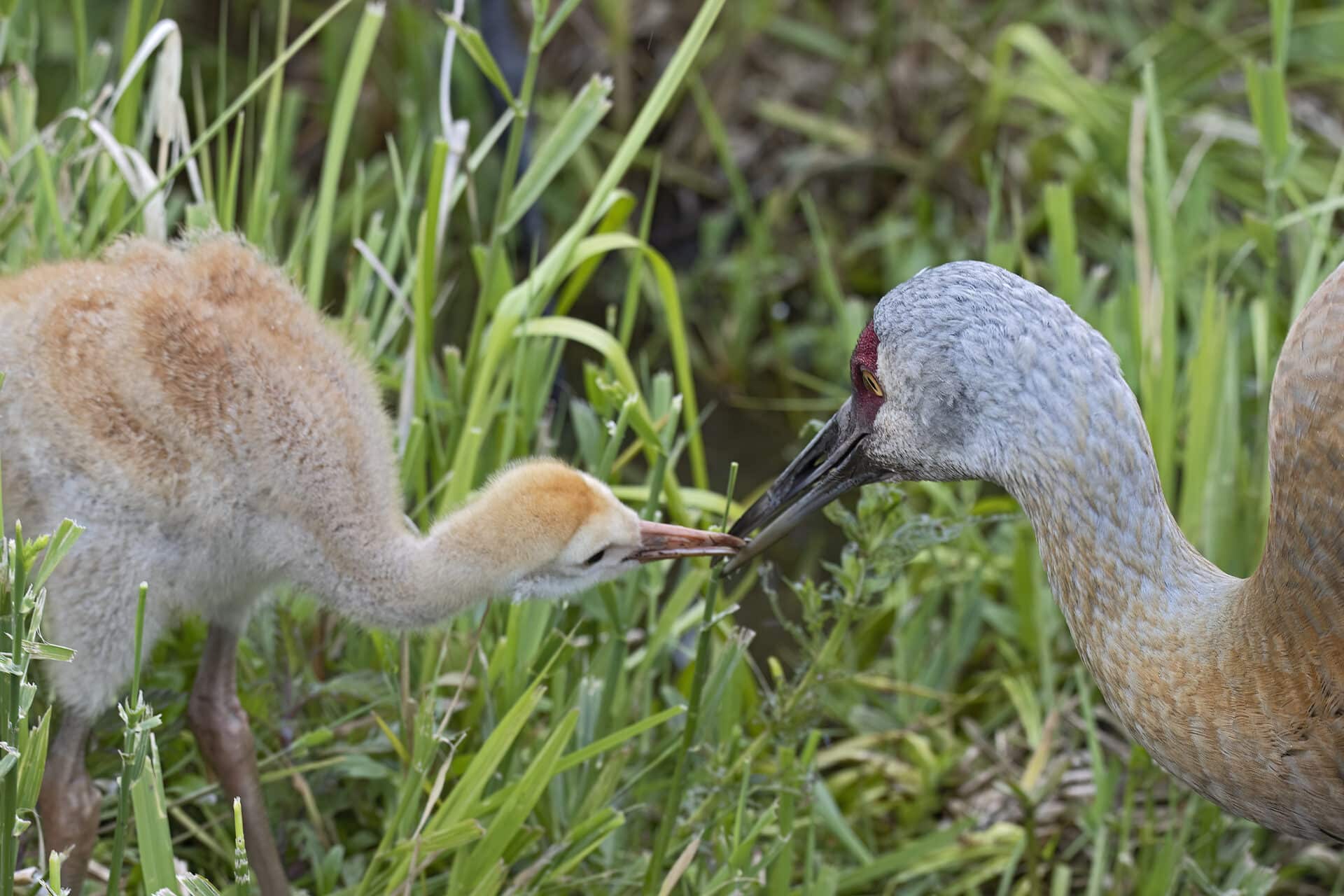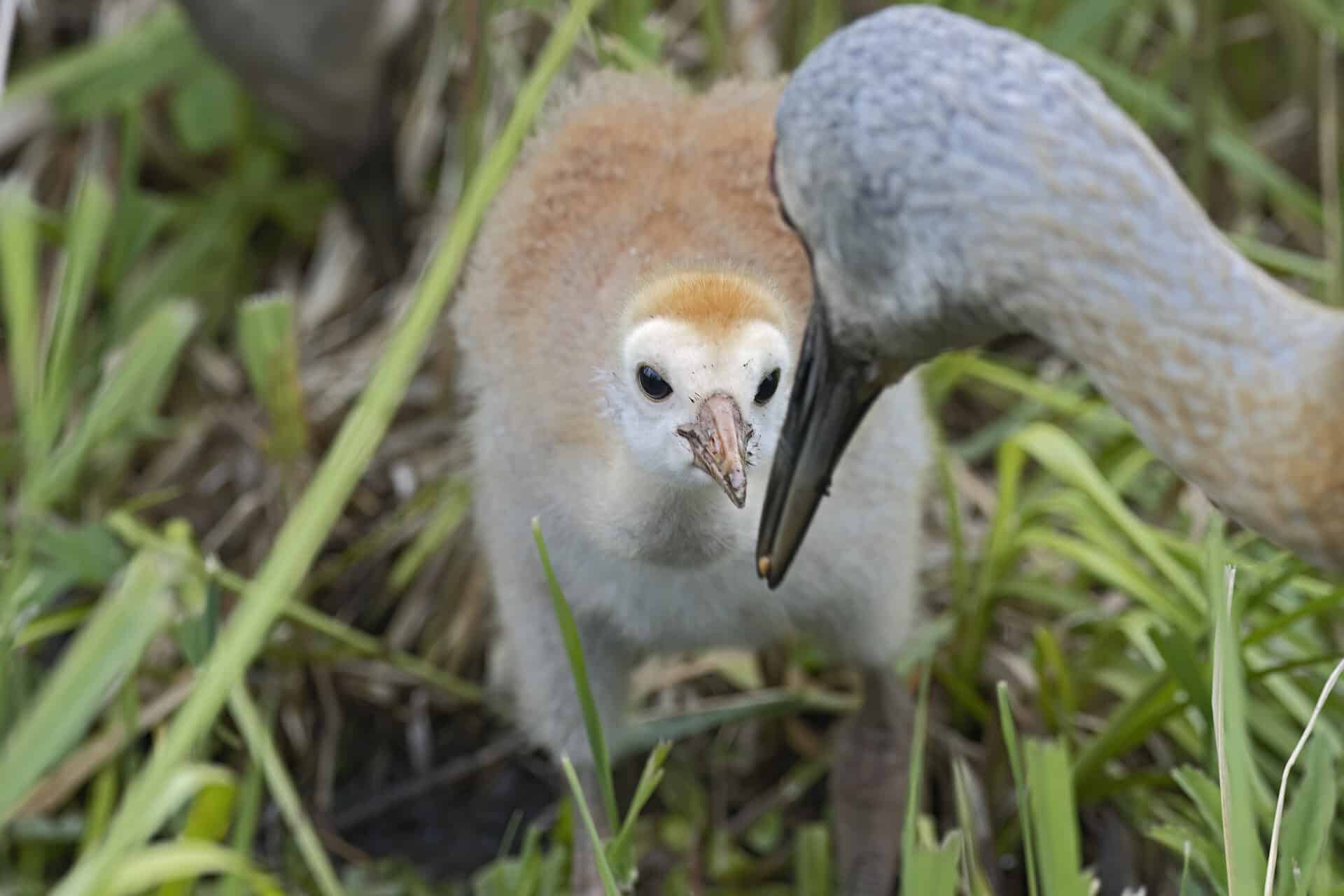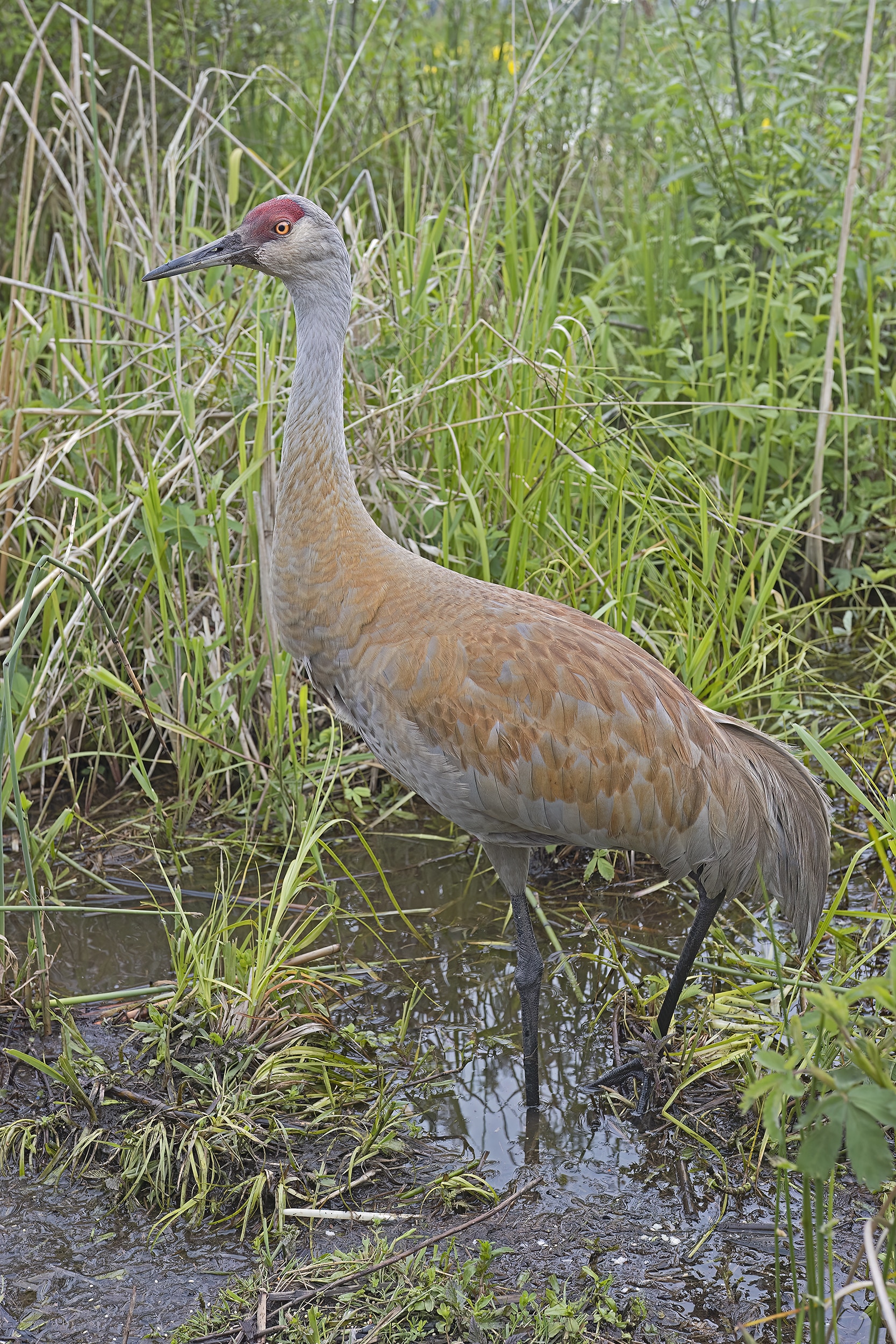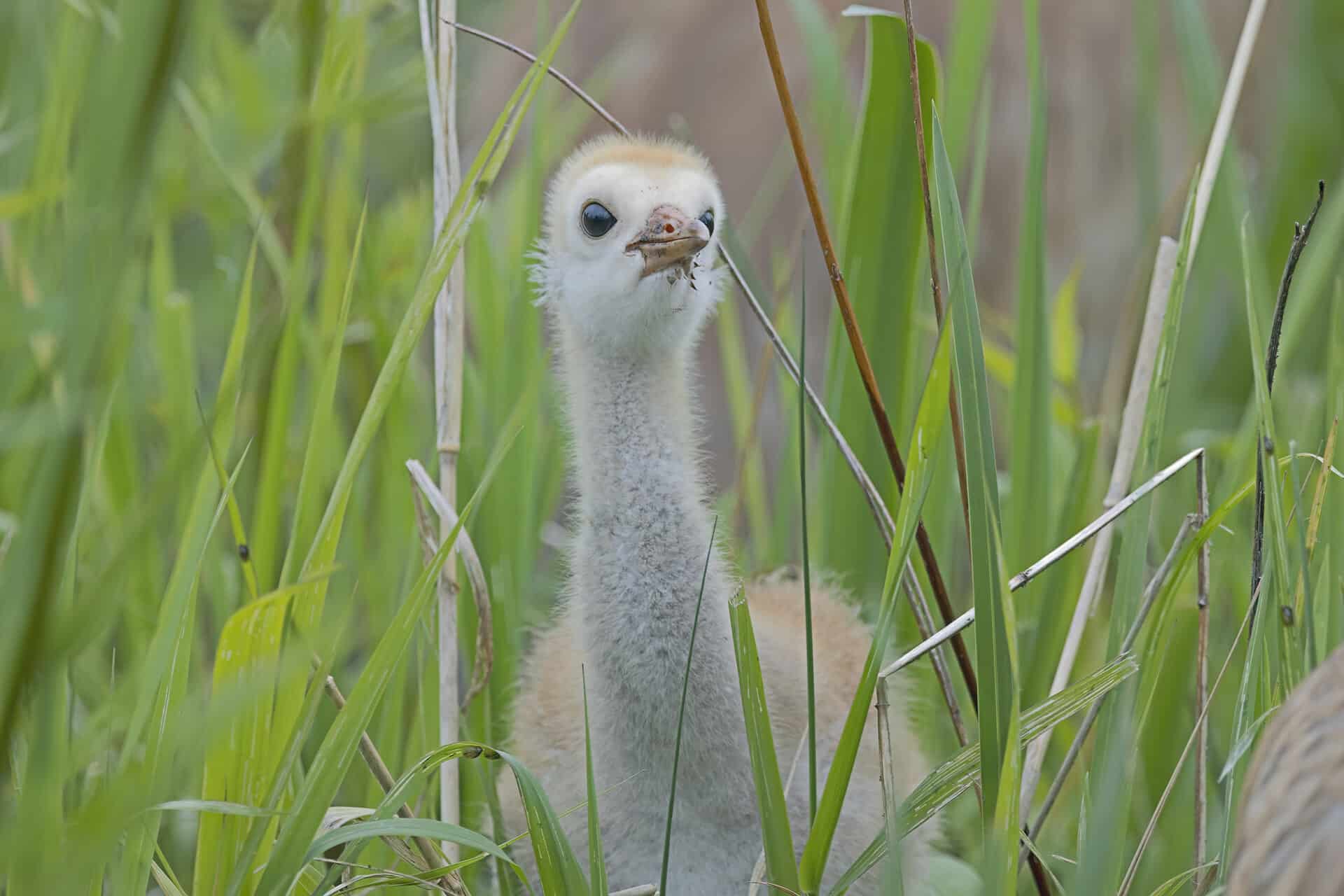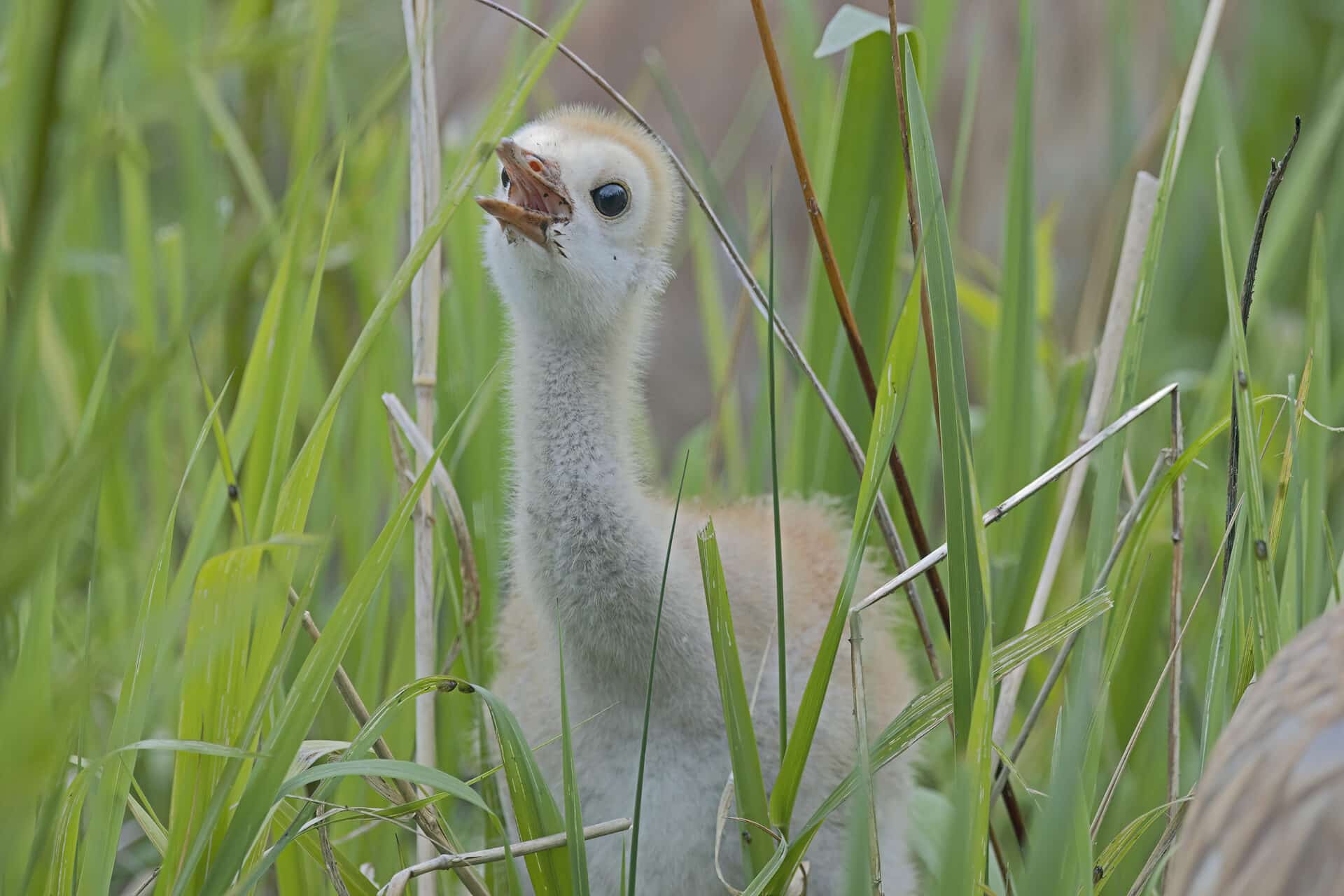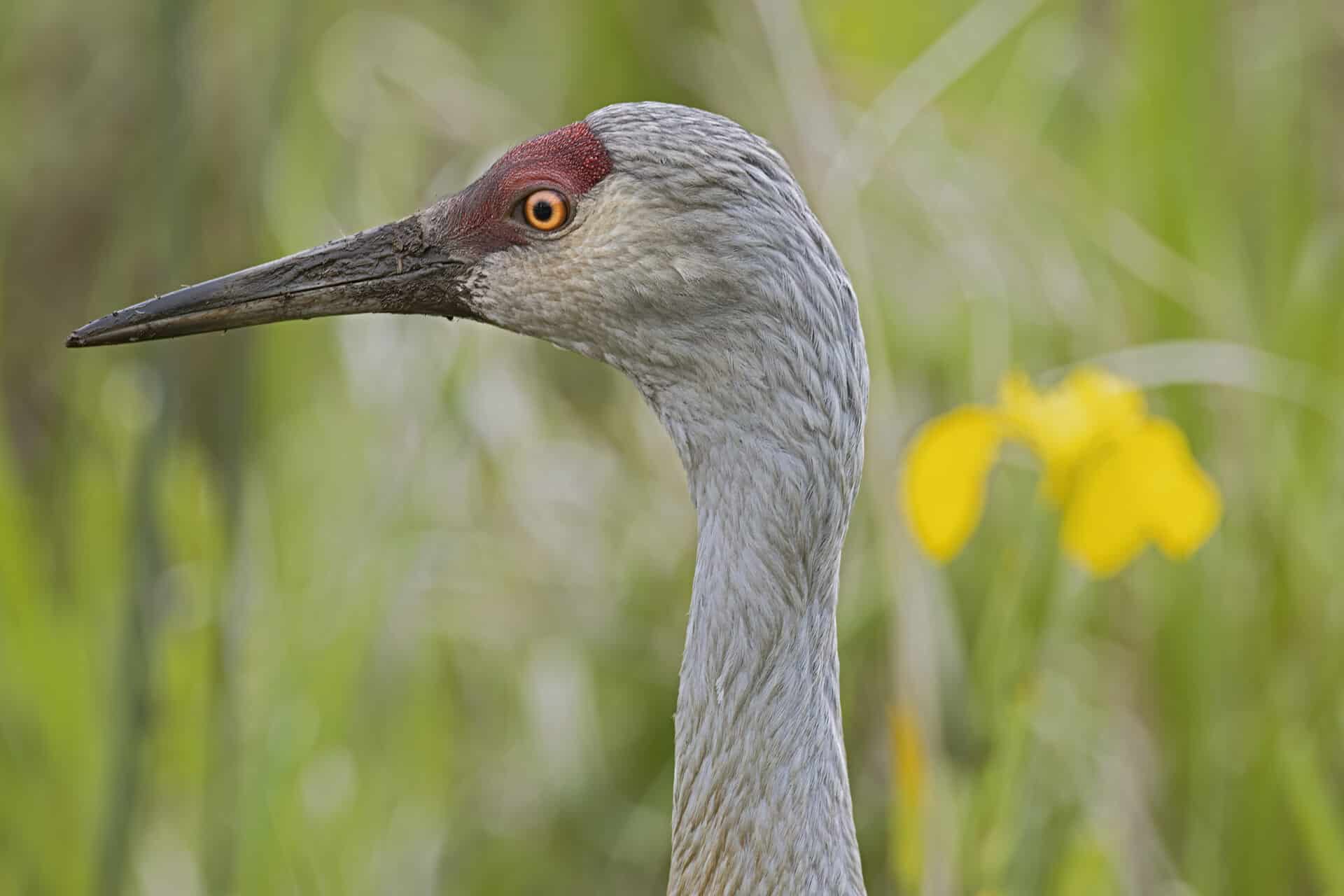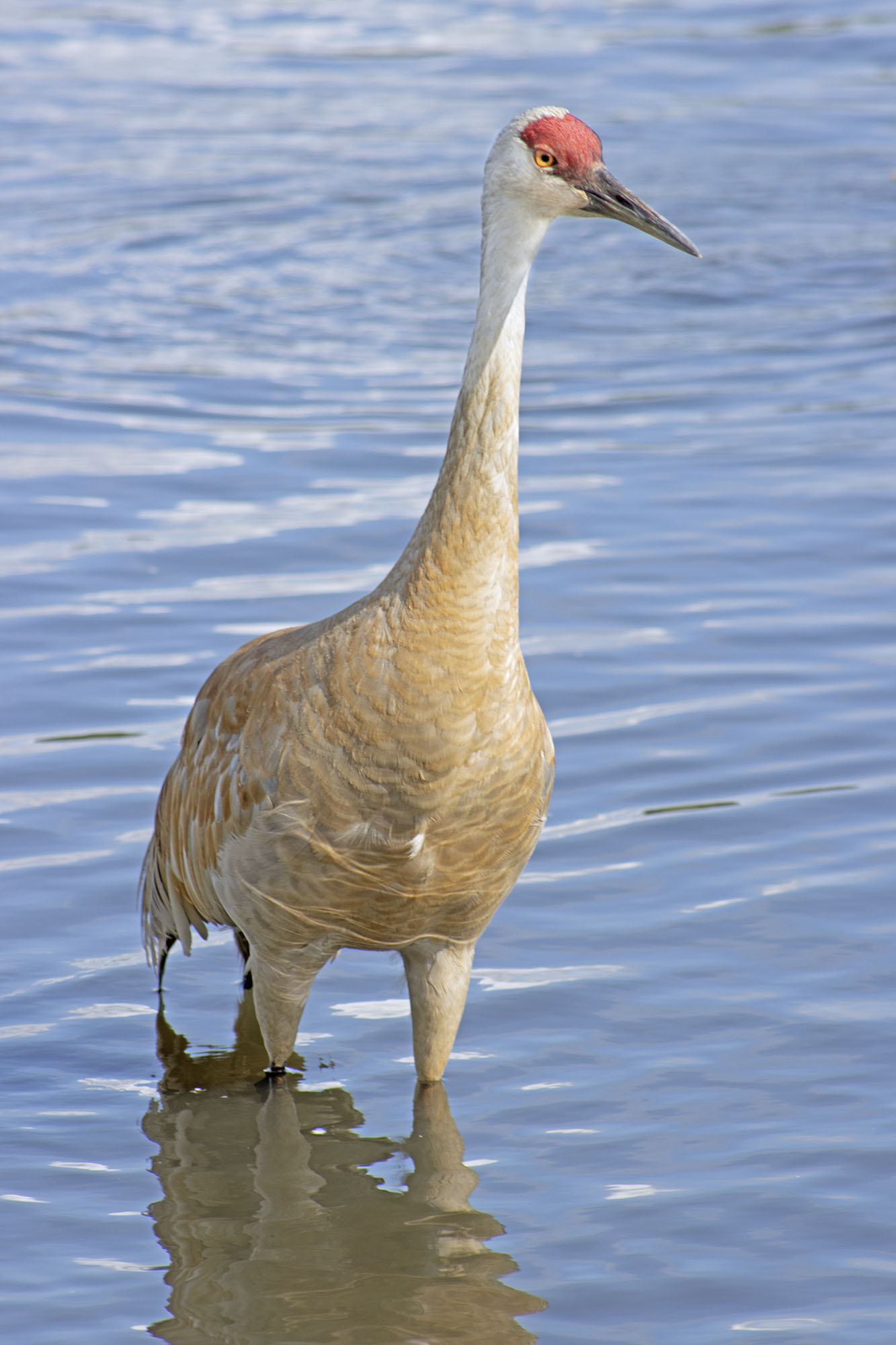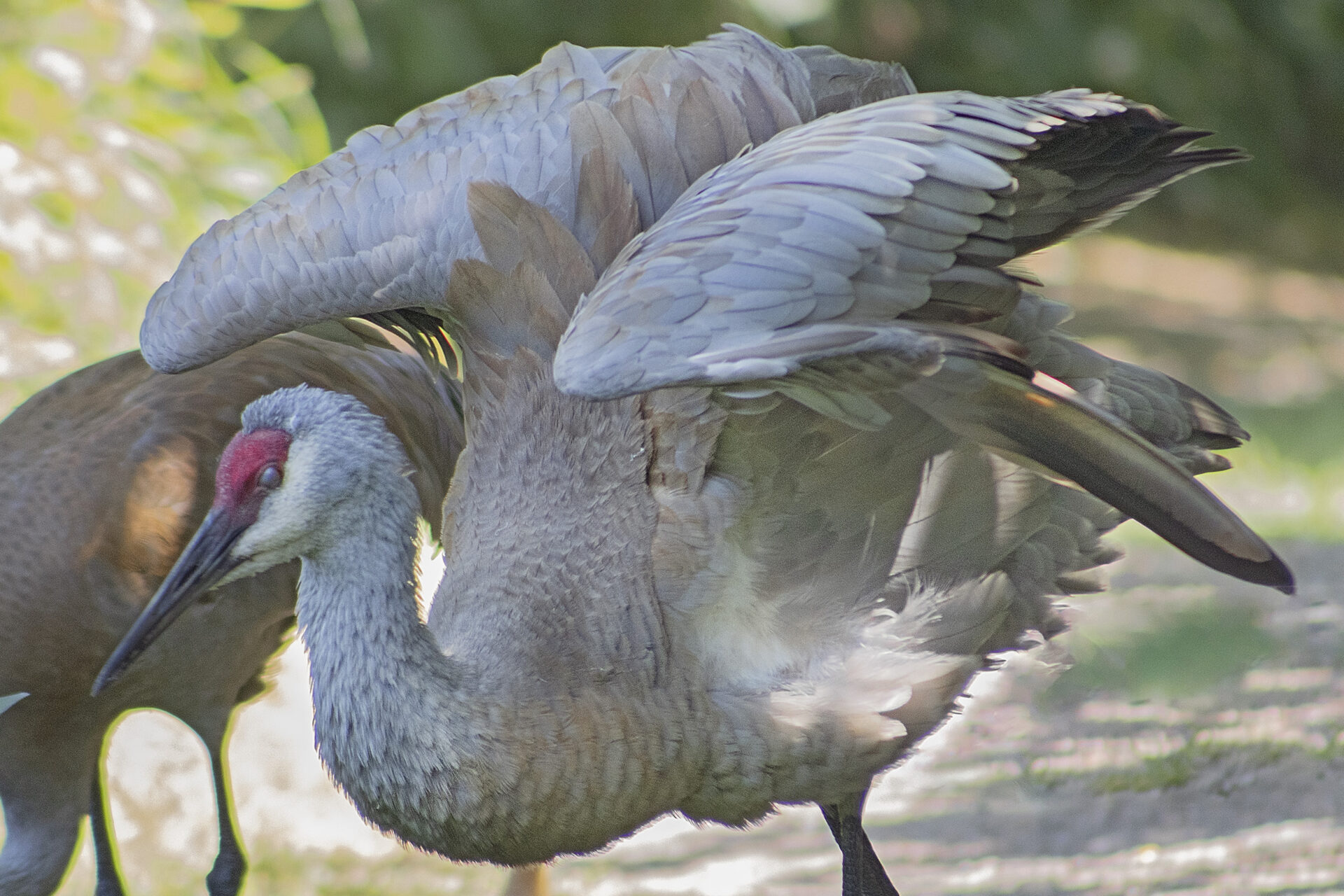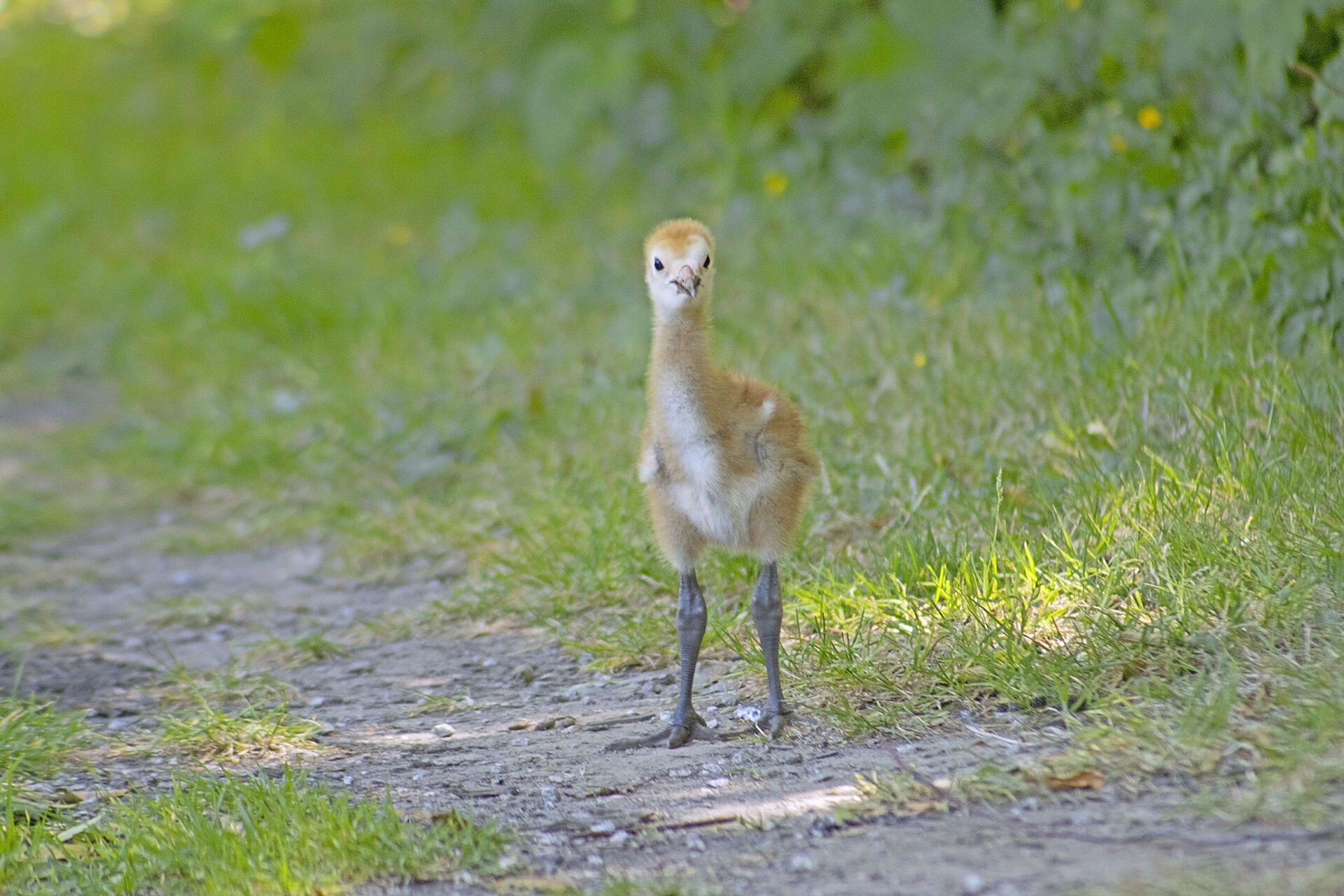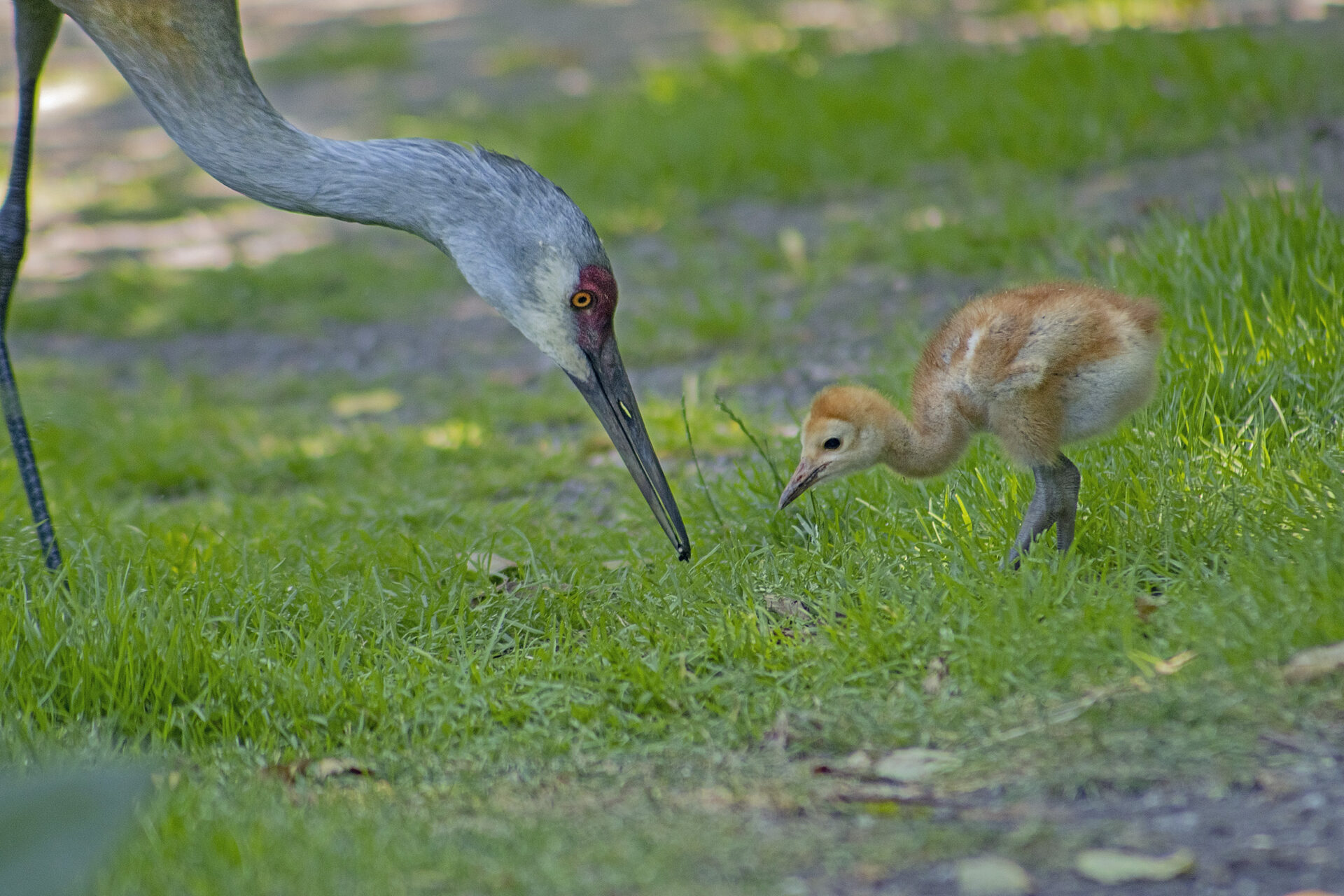Sandhill cranes are a tale as old as time: this bird dates back to an estimated 2.5 million years ago, or at least that’s what the oldest fossil we’ve found says. For me, this bird dates as far back as when I was a little girl at the bird sanctuary with her mother, unable to continue on the path thanks to a particularly defensive crane. I have no memory of the incident, so for all I know this bird was just standing there, and it only appeared threatening due to its large size.
Quick Facts
Latin Name: Antigone canadensi
Size: Up to 120cm (47.2in), with a wingspan of 200cm (78.7in)
Lifespan: 20 – 30 years
Finding a Sandhill Crane
Characteristics
Sandhill cranes stand tall amongst the other local birds here in British Columbia. Sandhill cranes have a greyish body with some beige spotting, with some having a stronger rusty beige colour on the wings and body than others. Males and females both have a red path from the peak towards the eyes.
Habitat
Sandhill cranes are found throughout North America and beyond, and prefer open habitats. They can be found in open prairies, grasslands, and wetlands. Their preferred habitat can vary by region.
Typically, the cranes will choose to nest around marshes and bogs.
Locally, the Reifel Bird Sanctuary and Burnaby Lake Park are both great places to see these prehistoric-looking birds.
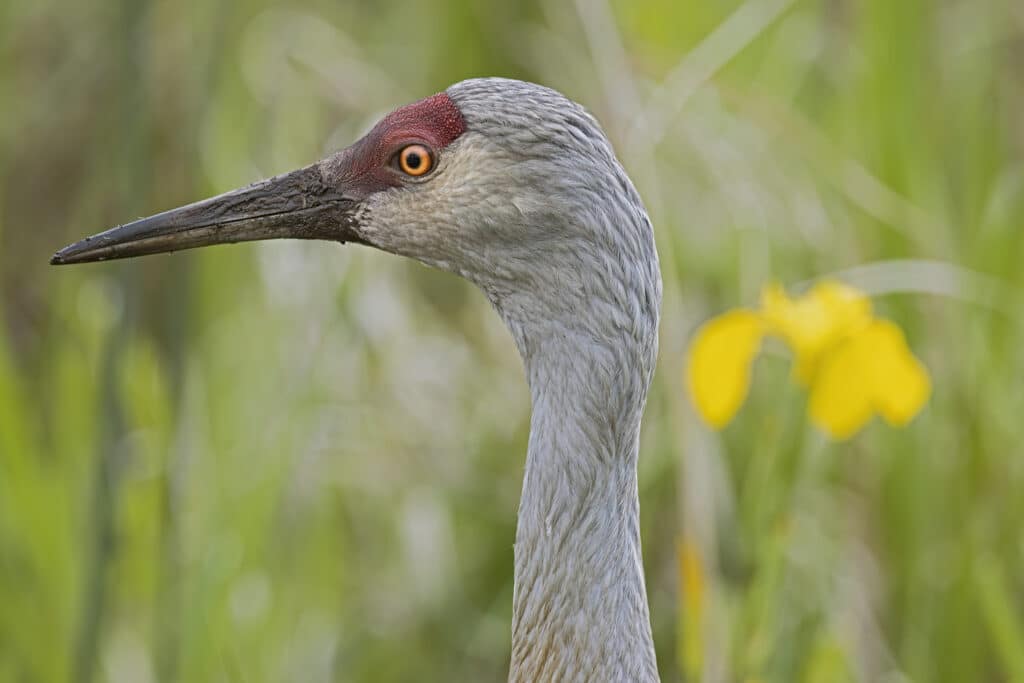
Diet
Sandhill cranes are omnivorous birds, which means they have a varied diet that includes both plant and animal matter. They are opportunistic feeders, so what’s on the menu will vary based on what’s available that time of year and where they are located.
- Grains: Sandhill cranes often feed on grains such as corn, wheat, barley, and rice, especially in agricultural areas where these crops are readily available.
- Insects: Insects make up a significant part of their diet, especially during the breeding season. They will eat various types of insects, including grasshoppers, beetles, and caterpillars.
- Small Invertebrates: Sandhill cranes may also consume small invertebrates like snails, worms, and crayfish.
- Aquatic Plants: In wetland areas, they feed on aquatic plants, including sedges, bulrushes, and pondweeds.
- Seeds: They consume a variety of seeds from both aquatic and terrestrial plants.
- Small Vertebrates: Occasionally, sandhill cranes will eat small vertebrates like frogs, salamanders, small fish, and even small mammals if they can catch them.
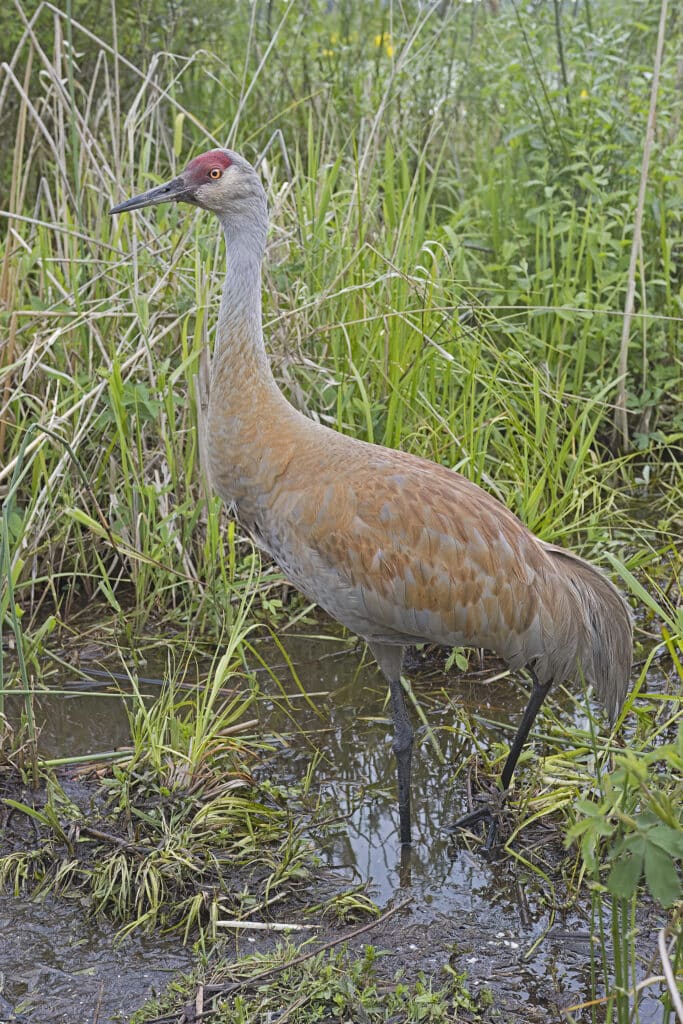
Breeding and Life Cycle
Sandhill cranes can begin breeding as early as 2 years old, but many don’t begin breeding until they are 7 years old. Once they find a mate they pair for life and remain with their mates year round. If one crane passes away, the remaining crane will seek a new one.
The cranes migrate to their breeding grounds each year, where they will perform dancing displays. These displays can include wing-flapping, bowing, and jumping. Some may even throw sticks or plants into the air.
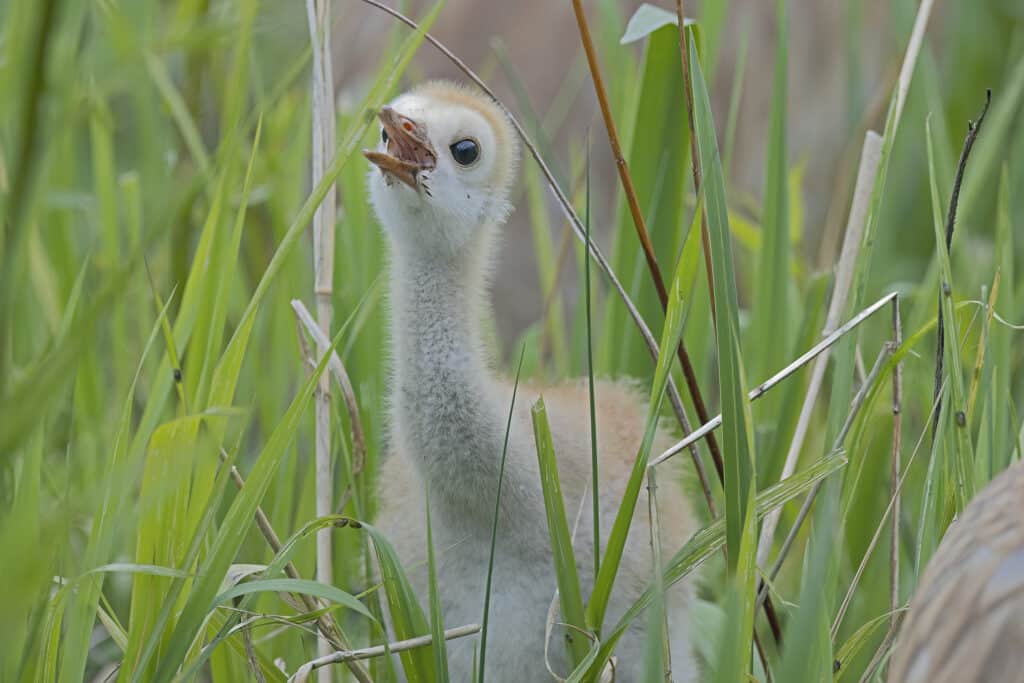
Conservation
The International Union for Conservation of Nature (IUCN), classifies sandhill cranes as “least concern”. In the past, there was some concern about the sandhill cranes, but their numbers have increased greatly since the 1970s. Today they are one of the most numerous cranes in the world.
Habitat degradation is still the biggest threat to the cranes, and localized species in Mississippi and Cuba are endangered.
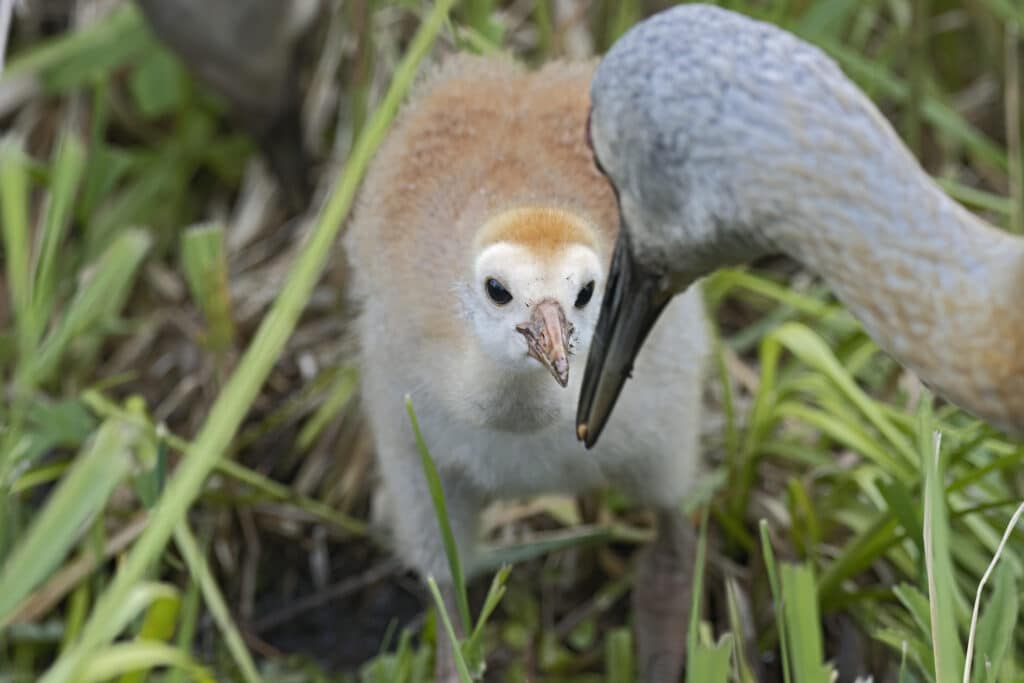
Sandhill Crane Gallery
Sources
- Audobon
- BC Bird Atlas
- All About Birds: Overviews
- All About Birds: Identification Guide
- The National Wildlife Federation
- Canada.ca
- Nature Conservancy Canada
Like this post?
Thanks for reading! You can support me in making more posts like this by buying me a coffee, visiting my store, and subscribing to my newsletter. Follow me on Instagram for daily posts.

